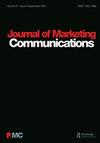Marketing communication education in developing countries: Post-pandemic insights from India and South Africa
Q1 Business, Management and Accounting
引用次数: 0
Abstract
In two developing nations, technology enhanced marketing communication education in the classroom, both during and after the COVID-19 pandemic. However, in what ways did enhancement occur, and to what ends? This research examines the reasons for and impacts of digitalisation on academic delivery of marketing communication education across two BRICS nations: South Africa and India. We use a comparative, narrative-based approach that challenges the ways that marketing communication educators often describe the significant teaching and learning agencies and incidents involving the place of technology in classroom learning. We show how the concepts of technological augmentation and paradox, the `TikTok effect´, and symbiotic pedagogies explain and help present a post-pandemic theory of marketing communication education in developing nations. We highlight the active learning and student-centred learning styles as symbiotic pedagogies that were regarded as best practice. Our findings show that educators were able to skilfully move across both styles depending on student need and skills required. We discuss how educators' flexibility across contexts allowed them to maintain best practice technology-mediated teaching and learning strategies during the pandemic. © 2023 Informa UK Limited, trading as Taylor & Francis Group.发展中国家的营销传播教育:来自印度和南非的大流行后见解
在两个发展中国家,在COVID-19大流行期间和之后,技术加强了课堂上的营销传播教育。然而,增强以何种方式发生,达到何种目的?本研究考察了数字化对两个金砖国家(南非和印度)营销传播教育学术交付的原因和影响。我们采用了一种比较的、基于叙述的方法,挑战了营销传播教育者经常描述涉及技术在课堂学习中的地位的重要教学机构和事件的方式。我们展示了技术增强和悖论、“抖音效应”和共生教学法的概念如何解释和帮助提出发展中国家大流行后的营销传播教育理论。我们强调主动学习和以学生为中心的学习方式被认为是最佳实践的共生教学法。我们的研究结果表明,教育工作者能够根据学生的需要和所需的技能巧妙地跨越这两种风格。我们讨论了教育工作者在不同情况下的灵活性如何使他们能够在大流行期间保持以技术为媒介的最佳实践教学策略。©2023 Informa UK Limited以Taylor & Francis Group的名义进行交易。
本文章由计算机程序翻译,如有差异,请以英文原文为准。
求助全文
约1分钟内获得全文
求助全文
来源期刊

Journal of Marketing Communications
Business, Management and Accounting-Business and International Management
CiteScore
7.70
自引率
0.00%
发文量
44
期刊介绍:
The Journal of Marketing Communications is a double-blind peer-reviewed journal devoted to publishing research papers and information concerning all aspects of marketing and corporate communication, branding both corporate and product-related, and promotion management. It is a channel for discussing issues such customer relationship management, integrated marketing communication, together with behavioural foundations of marketing communications and promotion management. The Journal will also consider papers in internal marketing and in the corporate communications domain.
 求助内容:
求助内容: 应助结果提醒方式:
应助结果提醒方式:


